Chase has officially started rolling out “Points Boost,” a new redemption system for Chase Ultimate Rewards travel bookings. On paper, it sounds exciting: Sapphire Reserve cardholders can now see up to 2 cents per point on select flights and hotels booked through Chase Travel. Chase Sapphire Preferred and Ink Preferred get smaller but still boosted rates on certain bookings.
But this is not just “we added a 2¢ sweet spot.” Chase is also ripping out the old guaranteed floor that longtime Sapphire Reserve / Preferred users loved — the automatic 1.5¢ (Reserve) or 1.25¢ (Preferred) value on any travel through the portal.
After October 26, 2025:
- There is no longer a universal 1.5¢ floor for Sapphire Reserve.
- There is no longer a universal 1.25¢ floor for Sapphire Preferred.
- Instead you get:
- Cash out / non-Boost travel redemptions at 1¢ per point (ouch),
- Dynamic “Points Boost” pricing on select flights + hotels,
- Airline & hotel transfer partners (still alive),
- Pay Yourself Back (which Chase already nerfed before and is currently mostly 1.25¢ in niche categories, not 1.5¢).
If you were around before October 26, 2025 and moved your points into the right card in time, you’re in better shape than new folks. Let’s break down what happened, what “grandfathered” means, and how to actually recognize a good redemption under this new system.
What Is Points Boost?
Points Boost is Chase’s new “surge pricing, but for point value.”
When you search in the Chase Travel portal (chasetravel.com / Chase Travel in the app), some flights and hotels will show a special boosted rate. Those listings are marked with a little blue rocket ship icon. That icon means Chase is temporarily letting your points redeem for more than their new baseline 1¢ value.
A few patterns we’re seeing across sources and user reports:
- Sapphire Reserve / Sapphire Reserve for Business / J.P. Morgan Reserve:
- Up to 2.0¢ per point on select “top-booked” hotels and on certain airlines’ flights.
- Up to 2.0¢ per point at The Edit, Chase’s curated hotel collection.
- Sapphire Preferred / Ink Business Preferred / legacy Ink Plus:
- Up to 1.5¢ per point on select hotels and main-cabin flights.
- Up to 1.75¢ per point on some premium cabin tickets (business/first) with specific partner airlines.
Those boosted rates are not across the entire portal. They’re on rotating, hand-picked options. You might see, for example, United, Air Canada, Emirates, EVA Air, LATAM, etc., tagged with the rocket. (Those are airlines that people have repeatedly seen show up under Boost.) The rest of the flights in the search may only give you 1¢ per point.
Same idea with hotels. A Chase-promoted property might price at 2¢/point for Reserve holders that day — and the generic airport hotel down the block might still be 1¢/point.
So “Points Boost” = dynamic upsell: Chase steers you toward specific partners by giving you a better cents-per-point rate if you book that flight or that hotel through Chase Travel.
The Big Loss: The Old 1.5¢ / 1.25¢ Floor Is Gone for New Points
Until now:
- Sapphire Reserve gave you a guaranteed 1.5¢ per point when you booked any travel through the Chase portal.
- Sapphire Preferred (and Ink Preferred / Ink Plus) gave you 1.25¢ per point.
That predictable floor is what made UR so easy to value. If you couldn’t find good transfer partner space, you could always just cash out travel at 1.5¢ with Reserve and feel fine about it.
That “always 1.5¢/1.25¢” rule ends with points earned on or after October 26, 2025.
Here’s the new world:
- Cash out / non-Boost portal travel: 1.0¢ per point.
- Boosted listings with the blue rocket: up to 2.0¢ (Reserve) or up to 1.5¢ / 1.75¢ (Preferred/Ink, depending on cabin).
- Transfer partners: still possible (Hyatt, United, Air Canada Aeroplan, etc.).
- Pay Yourself Back: Chase already gutted this from 1.5¢ on everything. Right now it tends to hang around 1.25¢ on certain rotating categories, but it’s no longer a dependable 1.5¢ cash-equivalent path. (Readers are hoping it sticks around because that’s basically the last semi-reliable cashout multiplier.)
So unless you specifically hit a Boost route/hotel or find good value via a transfer partner, your new points are effectively worth 1¢ each in the Chase portal.
That’s a real devaluation.
Grandfathering: How Existing Cardholders Can Still Get 1.5¢ (or 1.25¢) Until October 26, 2027
Chase did throw longtime cardholders a bone.
If you had a Sapphire Reserve, Sapphire Preferred, Ink Preferred, or Ink Plus before June 23, 2025, you’re considered an “existing cardmember.” Chase carved out a special protection for you — but only for points earned before October 26, 2025.
Here’s the important timeline:
1. Points earned (or successfully combined/transferred in) before October 26, 2025
- Those points are “grandfathered.”
- Sapphire Reserve folks can still redeem those older points for a flat 1.5¢ per point on any travel in the Chase Travel portal.
- Sapphire Preferred / Ink Preferred / Ink Plus folks can still redeem those older points for a flat 1.25¢ per point the same way.
- That protected floor lasts until October 26, 2027.
In other words: your “old” points keep the old rules for two more years.
2. Points earned on or after October 26, 2025
- They are not grandfathered.
- They follow the new system only: dynamic Points Boost or sad 1¢ redemptions.
3. Mixing buckets
Your account now effectively has “buckets”:
- Bucket A = pre–Oct 26, 2025 points (grandfathered 1.5¢ / 1.25¢ privilege through Oct 26, 2027)
- Bucket B = post–Oct 26, 2025 points (new world, no floor)
BUT: Chase applies redemptions FIFO (first-in, first-out). Chase confirmed that you can’t choose which bucket to spend from. The oldest points are burned first, no matter what you’re doing with them — whether you’re transferring to Hyatt, cashing out, or booking travel. That means if you redeem a big chunk to Hyatt in November 2025, Chase will first drain your protected, high-value bucket. Once those are gone, you’ve lost easy 1.5¢ access for portal travel even if you still have newer points sitting there.
People hate this part, because it means you can accidentally “waste” your 1.5¢-locked stash.
The October 25, 2025 Rush: Why Everyone Was Frantically Moving Points
Chase said: points that are in an eligible premium card’s account before October 26, 2025 will be treated as “earned before the cutoff” and keep the old 1.5¢ / 1.25¢ floor through October 26, 2027.
So what did people do?
- They moved every Ultimate Rewards point from Freedom / Freedom Flex / Freedom Unlimited / Ink Cash / Ink Unlimited / Ink Cash Preferred, etc., into:
- Sapphire Reserve (to lock 1.5¢ through 10/26/27), or
- Sapphire Preferred / Ink Preferred / Ink Plus (to lock 1.25¢ through 10/26/27),
- and they did that by October 25, 2025.
In short: consolidate first, then enjoy two more years of the “old rules” for those points.
Edge cases:
- Some users reported that transfers made late on October 25 weren’t instantly labeled as “grandfathered” in the portal, and the portal initially showed them redeeming for only 1¢. Chase’s own media team said those points should be recognized as eligible after the system updates, potentially by the next statement cycle. They also said you can call in if you urgently need those points redeemed at the legacy rate.
Also worth knowing:
- If you tried to product change to Sapphire Reserve after June 23, 2025, Chase says you will NOT get grandfathered 1.5¢ rights on that “new” Reserve account. That 1.5¢ grace is basically only for people who were already in the ecosystem before June 23.
- Household transfers still mattered. Chase historically allowed you to combine points with a spouse/household member. A lot of couples moved everything into the one Sapphire Reserve they planned to keep alive through October 26, 2027 so all legacy value sits in that single account.
After October 26, 2025: How You Actually Redeem Now
Let’s say we’re on/after October 26, 2025. Here’s what using points looks like:
Scenario A: You’re sitting on protected/pre-cutoff points
- Go to Chase Travel.
- Book basically anything: any hotel, any flight.
- Those “old” points will still redeem at 1.5¢ each if you’re Reserve, 1.25¢ if you’re Preferred/Ink Preferred. That lasts until October 26, 2027, unless you accidentally burn them all sooner.
- If the itinerary has the blue rocket icon, you might do even better than 1.5¢ thanks to Points Boost (Reserve can hit 2¢ on some stuff).
Chase says the system will auto-apply whichever redemption rate is higher for that booking — either your grandfathered floor (1.5¢ / 1.25¢) or the Boosted price. So you don’t have to pick manually.
Scenario B: You’re redeeming from post-cutoff points (no grandfathered stash left)
- Baseline is 1¢ per point.
- If (and only if) you select a Boost-eligible flight or hotel with the rocket icon, you’ll see a higher cents-per-point number, up to 2¢ for Reserve or up to 1.5¢ / 1.75¢ for Preferred/Ink Preferred depending on class of service.
- If you book something without the rocket? It’s basically 1¢. That’s a gut punch compared to the OG Sapphire Reserve era.
Scenario C: You transfer to partners instead of booking through Chase
- Transfers to travel partners like Hyatt, United MileagePlus, Air Canada Aeroplan, etc. are unchanged structurally. You can still move points 1:1.
- BUT remember FIFO. When you transfer points out to a partner, Chase will pull from your oldest bucket first, which might be the protected 1.5¢ stash. Translation: transferring to Hyatt could burn through your “good” portal points.
For Hyatt superfans, that’s not automatically bad — Hyatt can easily beat 1.5¢ of value per point. But for someone who mostly redeemed through the portal at 1.5¢, this FIFO rule can nuke your safety net earlier than you expect.
Is Sapphire Reserve Still Worth Holding?
This is now a real conversation.
Pros that still exist:
- You still get solid travel protections, Priority Pass-style lounge benefits, primary rental car insurance, and the easy-to-use $300 annual travel credit (which Chase re-confirmed is sticking around in the new Reserve lineup).
- Points Boost can hit 2¢, and 2¢ is higher than the old 1.5¢ — so if you’re flexible and willing to book whatever Chase highlights (United, Air Canada, Emirates, etc.), you can come out ahead.
- If you moved a big haul of points into Reserve before October 26, 2025, you basically locked in two more years of old-school 1.5¢ portal redemptions for those points, plus access to 2¢ when the rocket shows up. That combo is actually very strong for travel you book through Chase Travel.
The new headaches:
- No more “whatever flight, 1.5¢, done.” Now you’re hunting rocket icons.
- New points earned after October 26, 2025 default to a weak 1¢ floor unless Boost applies.
- FIFO means if you’re not careful, you can blow through your high-value bucket doing something that’s not even that special.
Some churners are basically calling this “CSR endgame” and saying they’ll pivot harder to Amex, Citi, and/or Bank of America Premium Rewards for general spend. Others are staying put because, frankly, if you did the October 26 consolidation correctly, Chase just promised you two more years of 1.5¢+ plus possible 2¢. That’s still elite — it’s just now gated.
Reader Strategy Cheat Sheet
Here’s what a smart Sapphire Reserve / Preferred user is doing after the changes:
- Know your buckets.
Treat “pre–Oct 26, 2025 points” like gold. Those have a clock (good through Oct 26, 2027). Don’t casually blow them on mediocre 1.1¢ redemptions or random gift cards. - Check Boost before you book.
When you search flights/hotels in Chase Travel, look for the blue rocket icon. If it’s there, do the math:- Sapphire Reserve: If you’re getting ~2¢ per point, that can rival or beat many transfer partner sweet spots, especially for simple United/Star Alliance itineraries or Emirates premium cabins.
- Sapphire Preferred / Ink Preferred: If you’re seeing 1.5¢ or 1.75¢ for a premium cabin ticket, that can be very respectable versus transferring.
- Don’t assume you can “pick which points get spent.”
You can’t. Chase goes FIFO. If you want to preserve your grandfathered stash for future portal bookings at 1.5¢, then don’t casually transfer huge chunks to partners right away. Once those old points are gone, they’re gone. - If Chase mis-bucketed you on Oct 25 transfers, call.
Chase’s media team has told people: if you moved points into Reserve on 10/25/25 and the portal is showing them as “new” 1¢ points instead of grandfathered 1.5¢ points, Chase can fix it manually or escalate it. (Yes, people already ran into this.)
FAQs
What is Points Boost in plain English?
Points Boost is Chase’s new dynamic pricing inside its travel portal. Certain flights/hotels get tagged with a boosted value — up to 2¢/point on Sapphire Reserve and up to 1.5¢–1.75¢/point on Sapphire Preferred / Ink Preferred — instead of the normal 1¢/point.
Did Chase kill the 1.5¢ redemption on Sapphire Reserve?
For new points earned October 26, 2025 and later, yes. There is no longer a guaranteed 1.5¢ rate on every portal booking. You either get 1¢, or you get whatever Boost offers on that itinerary.
Can I keep 1.5¢ if I already had a Sapphire Reserve?
Partially. If you had an eligible premium card before June 23, 2025 and you had (or moved in) points before October 26, 2025, those “old” points keep the 1.5¢ (Reserve) or 1.25¢ (Preferred/Ink Preferred) floor on portal travel until October 26, 2027. After that, gone.
What if I product changed into Sapphire Reserve after June 23, 2025?
Chase has said those accounts don’t inherit the legacy 1.5¢ floor. In other words, last-minute product changers don’t get grandfathered the same way true existing cardholders do.
What if I transferred points from my Freedom / Ink Cash to my Sapphire Reserve on October 25, 2025 and Chase says those points are only worth 1¢?
Chase’s own reps have told users that late 10/25 transfers may not show correctly right away, and it can take until the next statement cycle to correctly bucket them. They’ve also said you can call the number on the back of your card and ask for help if you need to redeem immediately at the old 1.5¢ rate.
Will Chase still offer Pay Yourself Back at good rates?
Right now, Pay Yourself Back lives on, but mostly around ~1.25¢ for certain rotating categories, not the old 1.5¢ on anything-you-want. So PYB is no longer the slam dunk cashout path it used to be for Sapphire Reserve.
If I transfer to Hyatt or United, does that spend my “good” bucket first?
Yes. Chase uses FIFO — first in, first out — for all redemptions, including partner transfers. That means transferring to Hyatt will eat your oldest (a.k.a. grandfathered, most valuable) stash before touching newer/less-valuable points.
Bottom line: is Sapphire Reserve dead?
Not dead… just different. Old-school “1.5¢ on everything forever” is ending for new points. In its place you get:
- A two-year runway (through Oct 26, 2027) to use your legacy stash at 1.5¢/1.25¢ if you were eligible and moved points in time,
- The chance to get up to 2¢/point on curated Boost bookings,
- And transfer partners as usual.
If you missed the October 26 cutoff and you’re earning fresh points now, you’re playing a much more “cherry pick Boost or transfer or settle for 1¢” game.
Final Take
Chase didn’t just “add a 2¢ redemption option.” They traded a simple, reliable floor (1.5¢ on any travel for Sapphire Reserve holders, 1.25¢ for Sapphire Preferred / Ink Preferred) for a gamified marketplace where Chase decides which flights and hotels get the “good” rate.
If you locked in before October 26, 2025, you basically got a two-year grace period to enjoy the old rules — and in some cases you get even more upside thanks to up to 2¢ Boost redemptions.
If you didn’t? Your new points are 1¢ unless and until Chase shows you that little blue rocket.


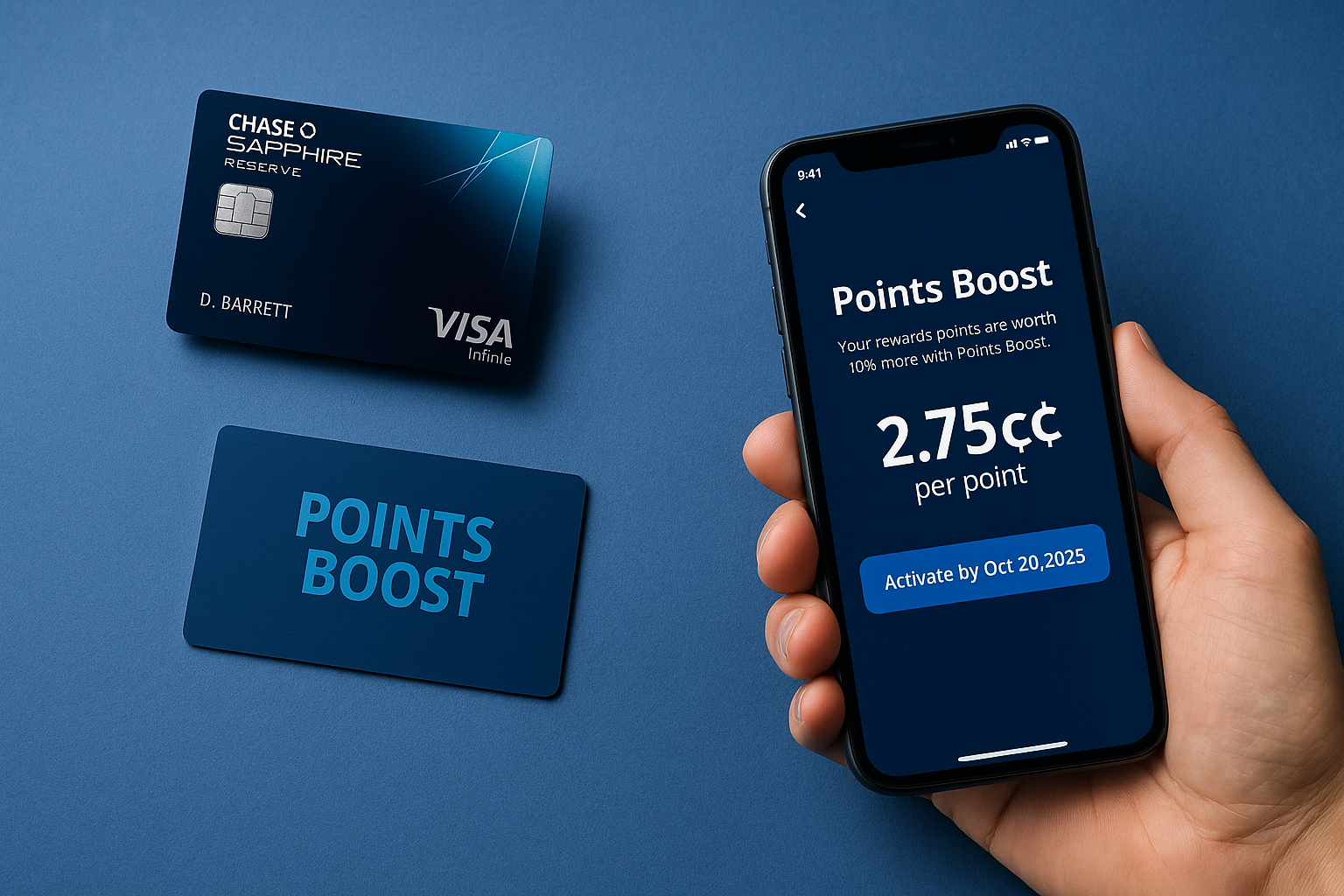






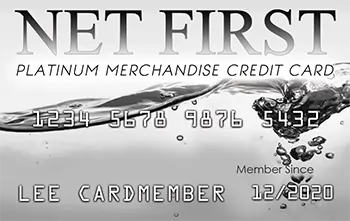
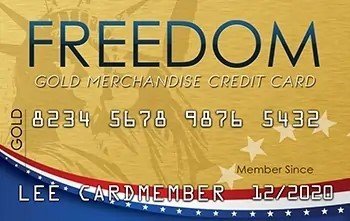

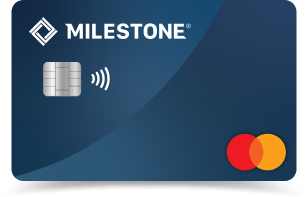

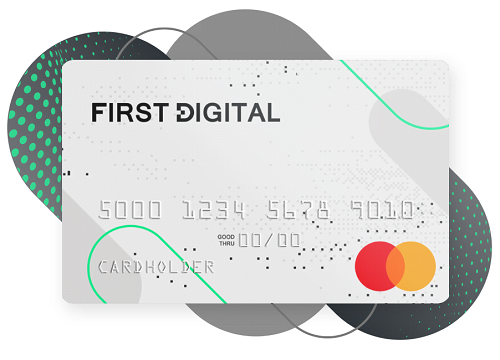
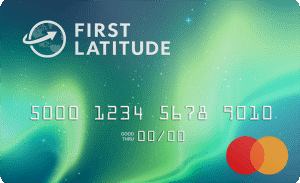
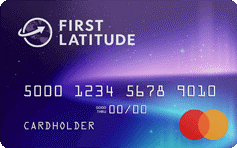
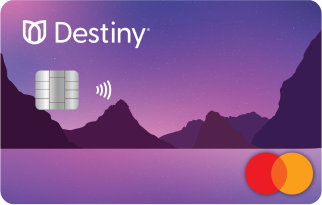





2 thoughts on “Chase Sapphire Reserve Just Blew Up The 1.5¢ Rule — Here’s How the New “Points Boost” Works (and What You Had To Do by Oct 26, 2025)”
What Is Points Boost? Something non-existent for me. It only works if you are willing to travel to and spend time at the destination, which is “boosted”. None of mine is.
If you look into Chase travel when you’re looking on cards like the sapphire preferred or the sapphire Reserve and the same goes for the ink preferred and the sapphire reserve for business. You’ll see an option to press Point boost that will boost your points value to 75% more or sometimes 100% more value. It will usually be more on business class kind of flights, for example in United Airlines. And you’ll also see that mainly and more so by hotels. Check it out and let us know your experience.